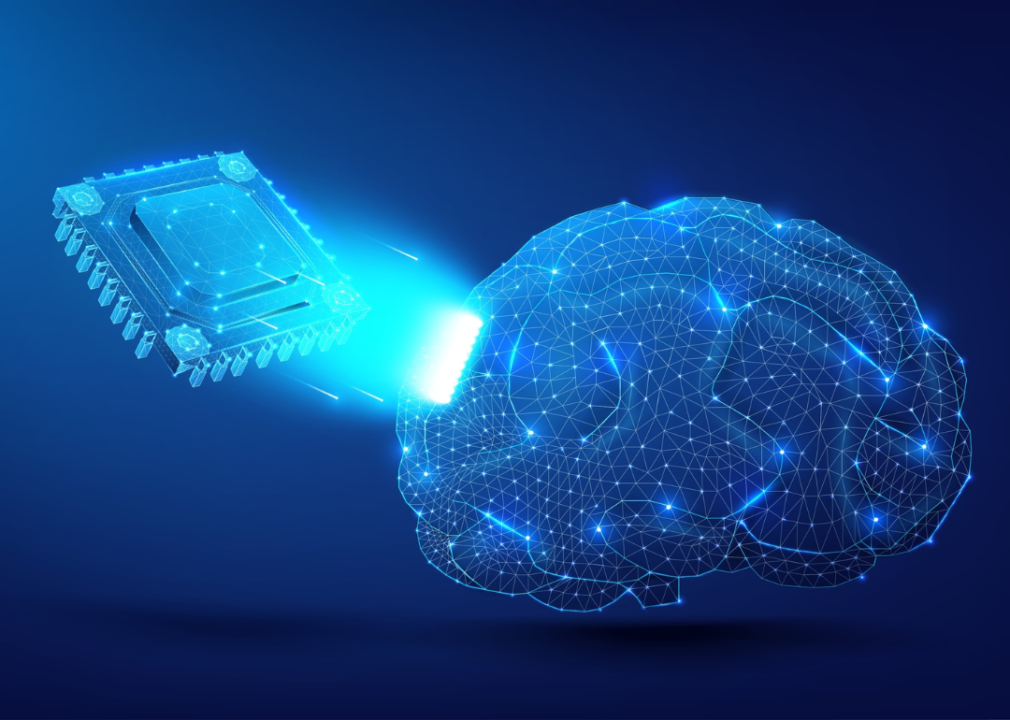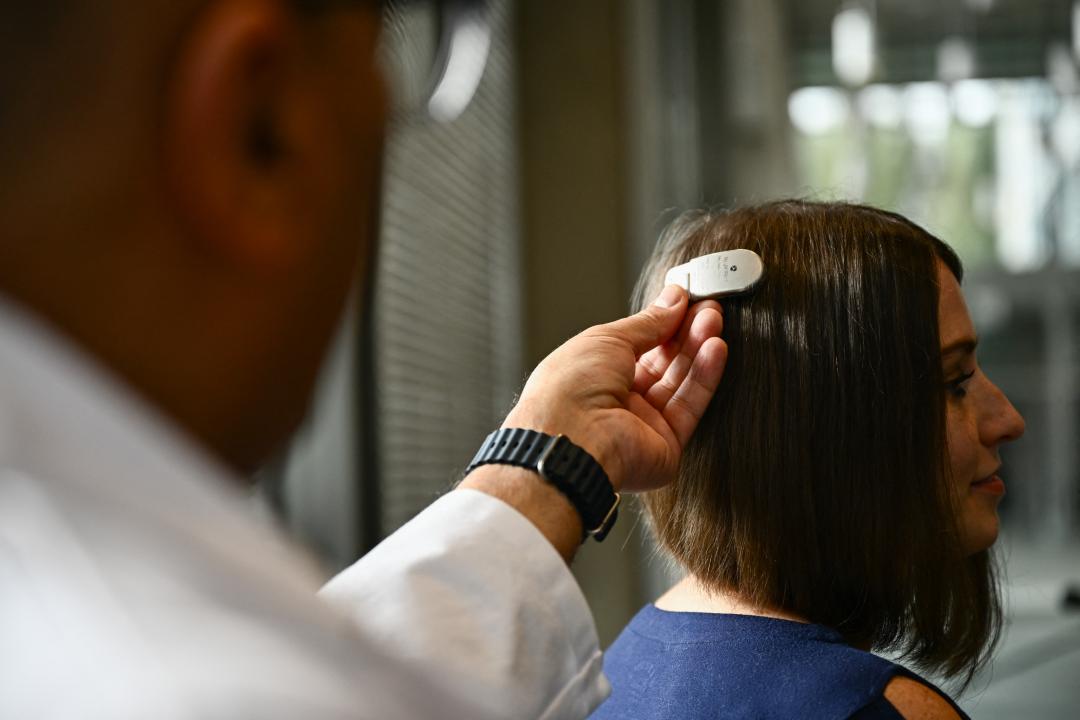
ZinetroN // Shutterstock
How technology is bridging the brain and computer
Digital illustration of a brain connected to a computer chip.
“It's all happening in my brain. If you see the cursor moving on the screen, it's all me. Pretty cool, right?”
These were the words of Noland Arbaugh, a man paralyzed from the shoulders down who used only his head to play chess on his laptop with the help of a brain implant created by Neuralink. The company shared that moment with the world on an X livestream in March.
Neuralink, an American startup co-founded by Elon Musk, is working on a “brain computing interface” (known as BCI) that connects the brain to digital technology. These devices come in many forms, some surgically implanted in people's heads, and others non-invasive and placed outside a person's body. The product received approval for clinical trials from the Food and Drug Administration in May 2023, but is not yet on the market.
So how exactly does this technology work?
This chip sends neural signals from your brain to your phone or computer, allowing you to perform functions without a tap or swipe. In reality, electrical signals from the brain are converted into real-time data. More simply, Arbaugh reported thinking about the movement he intended and seeing it happen on screen.
In addition to making a difference for individuals with paralysis, this class of technology can also help researchers and medical professionals monitor brain activity to track abnormal sleep patterns and early signs of epilepsy. The School of Medical Technology examined academic research and news reports to examine how technology that bridges the brain and computers has evolved.
![]()

DEA PICTURE LIBRARY / Contributor // Getty Images
Researchers have been working on this for a long time
A picture of the Galvani family experimenting with frogs.
Countless scientists have tried to understand how the brain affects other parts of the body. In the late 18th century, Italian physicist and physician Luigi and his partner Lucia Galvani discovered that they could induce muscle contractions in frogs by administering an electric shock. The couple from Bologna witnessed electricity in animals and theorized that the brain is essential for transmitting electrical fluids through nerves.
More than a century later, researchers have improved their understanding of the electromagnetic signals sent by the brain. In 1929, German psychiatrist Hans Berger created the first electrocorticogram, which recorded the brain waves of surgical patients, marking a turning point in the evolution of neuroscience.
EEG research did not begin in earnest until the 1960s, and early experiments often involved monkeys. In 1973, Jacques Vidal, a computer science professor at the University of California, Los Angeles, published a paper that coined the term “brain-computer interface” and laid the foundation for the field.
In the early 1990s, Jonathan Wolpaw and a group of other researchers created an early brain-computer interface that allowed people to mentally move a computer cursor from the center of a computer screen to the edges.
By 1999, researchers had discovered how to create a machine that allowed rats to control a robotic arm to ingest water, and they were able to use “brain-derived signals” to control the arm. Research that may have once seemed like science fiction now has a higher purpose: learning about the possibility of restoring motor skills to paralyzed patients.
Neuralink's Brain Chip reflects the latest advances in BCI technology. It works wirelessly, so you don't need wires coming out of your head like past products. The Brain Chip also gives users more precise control compared to past devices. Arbaugh reported that he was able to play the popular computer game Civilization VI for eight hours, only stopping because his brain implant needed recharging.
Other companies, including Blackrock Neurotech and BrainGate, are developing similar devices.

Patrick T. Fallon/AFP //Getty Images
Scientific progress comes with risks
Doctor demonstrating the location of a woman's brain implant.
As with any new technological frontier, research on BCIs comes with ethical challenges. The science is still in its infancy, and human clinical trials are limited.
Some critics cite the privacy concerns inherent in a machine that can scan signals from a person's brain. Some say machines implanted in the brain could have unexpected effects on decision-making and mood. Future brain-computing interfaces could create new digital divides if, for example, they enhance cognitive functions. If this technology is available to only a few, social inequalities can be further entrenched.
Neuralink has been controversial due to safety and animal welfare concerns. The company tested many of its products on monkeys and was investigated by the Department of Agriculture for possible animal welfare violations. Last year, Wired reported that about 10 of his Neuralink subjects died in captivity. Musk denied that his company's experiments caused the monkey deaths.
That same year, a Reuters special report revealed that the company's employees were pressured to sacrifice safety to speed up FDA approval. Additionally, members of Congress called on the Securities and Exchange Commission to investigate whether Neuralink misled investors about the potential risks of its technology.
Expert opinions differ on how best to utilize BCI. The Society of Neurology is passionate about developing medical advances to help people with neurological disorders and paralysis. Some software and engineering “futurists” aspire to increasing human intelligence and augmenting everyone's capabilities. As Musk says, Neuralink's ultimate goal is to “achieve symbiosis with artificial intelligence.”
For Arbor, this technology has not completely fused minds, but it has helped him overcome his previous limitations. You can do this. ”
Story editor: Aliza Salario. Copy edited by Kristen Wegzin. Photo selection by Lacey Kerrick.
This story was originally published and produced in the School of Medical Technology,
Distributed in partnership with Stacker Studio.




